London 3D Print Show 2014 – Review
Volvemos de Londres pensando y escribiendo en inglés, debajo encontraréis la traducción en castellano de nuestra crítica del 3D Print Show 2014.
A few observations and ideas that come to mind after our visit to the London 3D Print Show; So what exactly is the London 3D Print show? Essentially it’s a tradeshow filled with machines, services and above all, a new generation of young and digitally literate salesmen doing what salesmen have done for centuries; selling air to anyone who will listen.
Anyone you stop and talk to will be quick to trying to convince you that their “brand new” machine is the absolute bomb, full of clever innovations that the silly competition hasn’t thought about. “How would you like adjustable tension on your X and Y belts?” Wouldn’t that just change your life forever? “What about build volume? Our build volume is a whole 2 cubic cm bigger than the competition and our extruder gives you the option of a 0,35mm nozzle!!” How’s that for innovation!
All this “innovation” and yet with few exceptions, most of the printers at the show blindly rely on either Cura, Repetier or Slicer printing softwares. The entire array of machines and options broken down and conditioned by just three possible ways of slicing and generating supports on your prints. Companies with enough resources to create yet another meaningless copy of an Ultimaker or a Prusa but none of them with the wit to dedicate some energy to the most important thing, the software that drives the machine!! The software doesn’t just drive the machines, it’s driving the entire maker movement and we owe it EVERYTHING. But why work full time when you can make more money just working part time?
Gone are the days when Reprap had something to do with all this hype, activity and promise of a change in paradigm. In this context, Reprap has become a faint and perhaps even ugly reminiscence of the past, something that was cool just a year ago and that now people don’t want to talk about (just ask Makerbot). The only change in paradigm that can be predicted from the London Print show is basically that Open Source is the equivalent of a goldmine loaded with free knowledge, free labour and free innovation for corporations to exploit, package and sell back to us for a nice profit.
I found another good utility for the Print Show was keeping tabs on which startup is making more money or at least more noise. This year it was Beecreative’s turn to win a prize. Gee, its amazing what a good image and fancy packaging can do for a company, maybe they got some tips from Makerbot about how to sell uselessness in pretty boxes. How this machine ever compares to an Ultimaker 2 is completely beyond my ability to reason. Oh hang on, I get it, it’s REALLY PRETTY!! Yae!! Here’s a prize for you then…
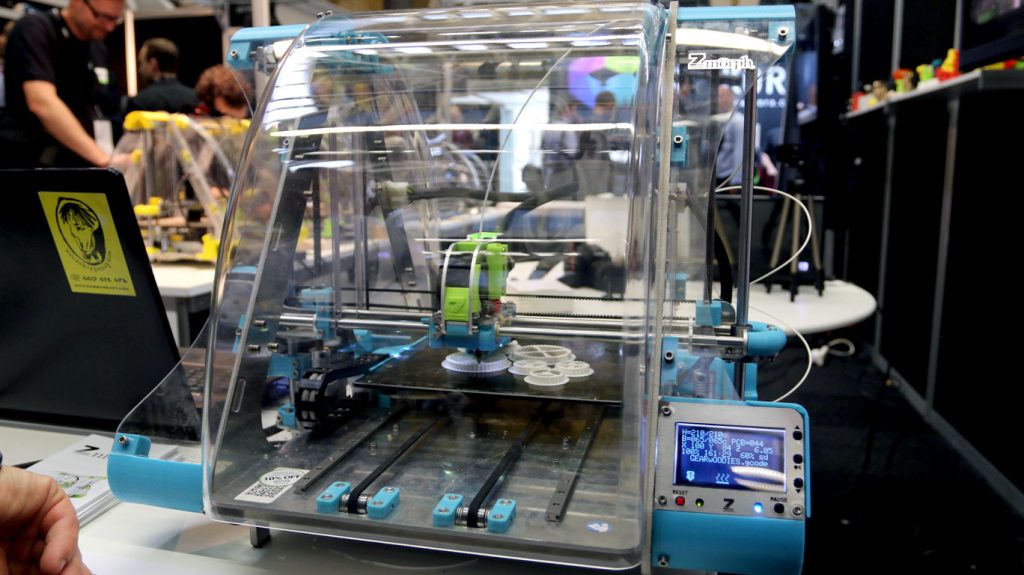
Zmorph at London 3D Print Show
From our point of view, there was one company that clearly stood out in terms of innovation, and that is Zmorph. We were delighted to have so many questions pop to mind regarding their machines. I mean, we’ve all heard and read about the possibility of interchangeable toolheads, maybe even seen a couple of prototypes here and there but these guys have actually done it. We were able to view an array of different interchangeable toolheads: Laser cutter, Dremel mount, ceramics extruder, cake and chocolate extruder, both a 1.75mm and 3mm filament extruders as well as a dual head extruder. Another exciting feature that obviously caught our eye was Voxelizer. Its very own and unique approach to 3D slicing software based on the idea of voxels!! Now we haven’t given it a try yet, but its worth a round of applause just for taking things seriously and proposing new ideas. The fact is, it looks quite interesting with a few completely new and what seem to be very useful tools like strengthening or thickening fragile or weak parts of your model. In any case, it sounds like an amazing tool for education and a cool machine to have at any school or Makespace. We hope to get our hands on both the machine and software sometime soon. Thanks to Bartosz for answering all our questions!
As you can see, not all was negative at the London Print Show, we had the opportunity of meeting some very interesting people such as Brook Drumm of Printrbot, Paul Sohi of Makerversity and Steve Wood, director of Gyrobot Limited whom we had the pleasure of sharing some pints along side our close friend Ignacio García, inventor of FilaFlex elastic filament. We also got to share some thoughts with Mario, Antonio and Isabel, our friends at bq who were working hard at their booth presenting the 100% spanish blooded Witbox printer. I guess our only regret was not having the opportunity to meet one of the communities most respected makers Mr Richard Horne (better known as RichRap) who came in to give a talk on his experiments in DIY 3D printing.
Let us not lose our faith, hopefully next year we’ll see some sort of focus on something fundamental from our point of view: 3D printing and EDUCATION!! If this technology is not given some serious thought and just let to grow wild and expand in the direction pointed out by pirates such as Bre Pettis and bullies like 3D Systems then its more likely it will just end up being another multi-billion dollar business in the hands of a few rather than the catalyst of a third industrial revolution. Some important questions need to be raised and addressed, in our opinion, no better place than an event like the London 3D Print show. Who said business was the enemy of critical thinking? Hint, hint!
Don`t miss our complete photo gallery of the event on our Facebook page.
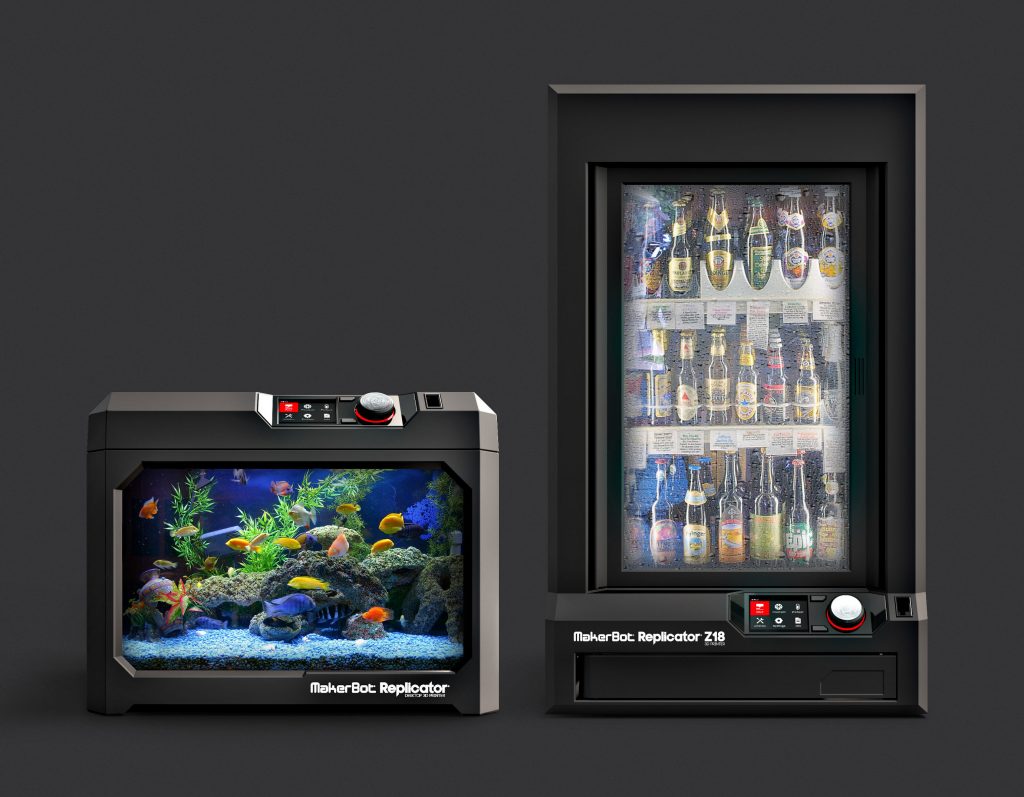
London 3D Print Show 2014 – Crítica en castellano
Algunas observaciones que nos vienen a la cabeza después de nuestra visita al London 3D Print Show. ¿Qué es exactamente el L3DPS? Esencialmente es una feria llena de máquinas, servicios y sobre todo llena de una nueva generación de vendedores y comerciales alfabetizados en el mundo digital y haciendo lo que llevan haciendo desde hace siglos; vender aire a cualquiera que esté dispuesto a escuchar.
Cualquiera con el que te pares a hablar será rápido en convencerte de que su “nueva y flamante” máquina es la bomba, llena de brillantes innovaciones que la competencia ha pasado por alto. “¿Cómo te gustaría poder ajustar la tensión de tus correas X e Y?” Eso si que nos cambiaría la vida para siempre. “¿Y el volumen de impresión? Nuestra máquina tiene unos grandiosos 2 centímetros cúbicos más que la competencia y nuestro extrusor te da la opción de una boquilla de 0,35mm!!” Vaya innovaciones.
Toda esta innovación y sin embargo, con pocas excepciones, la gran mayoría de impresoras dependen ciegamente de Cura, Repetier o Slicer como software de impresión. Un abanico casi inabarcable de mecánicas y opciones que se reducen y condicionan a únicamente tres formas de diseccionar geometría y crear soportes para impresión. Empresas con los suficientes recursos como para traer al mundo otra absurda copia de una Ultimaker o una Prusa pero sin la sensatez -o más bien picardía- de dedicarle un poco de energía a la cosa más importante de todas, ¡¡el software que hace funcionar la máquina!! Ese software no solo es el motor de la máquina, es el motor del movimiento maker entero y le debemos TODO. Ahora claro, ¿para qué trabajar a jornada completa cuando puedes ganar más dinero trabajando solo media?
Ya pasaron los días en que RepRap tenía algo que ver con todo esta excitación, actividad y promesa de un cambio de paradigma. En este contexto, RepRap ha pasado a ser una distante y quizá incluso fea reminiscencia del pasado, algo que molaba hace solo un año y del que hoy algunos no quieren ni oir hablar (preguntarle a los de Makerbot). El único cambio de paradigma que puede ser predicho desde el L3DPS es básicamente que Open Source es el equivalente a una mina cargada hasta arriba de conocimiento gratuito, trabajo gratuito e innovación gratuita para que las corporaciones la exploten, empaqueten y nos la revendan por un goloso beneficio.
Otra buena utilidad para la L3DPS es mantener controlados aquellos proyectos que están haciendo más ruido o bien más dinero. Este año ha sido Beecreative quien se ha llevado el premio a Best Consumer Printer. La verdad es que es alucinante lo que una buena imagen y un embalaje currado pueden hacer por una marca, quizá les pasaron algún consejo los de Makerbot acerca de cómo vender inutilidad en una caja bonita. Cómo esta máquina es ni si quiera comparable a una Ultimaker 2 me supera en todos los sentidos. Ah espera, claro, es que es ¡¡SUPER BONITA!!! Bieeeen!! «Tomad chicos, aquí tenéis, un premio…»
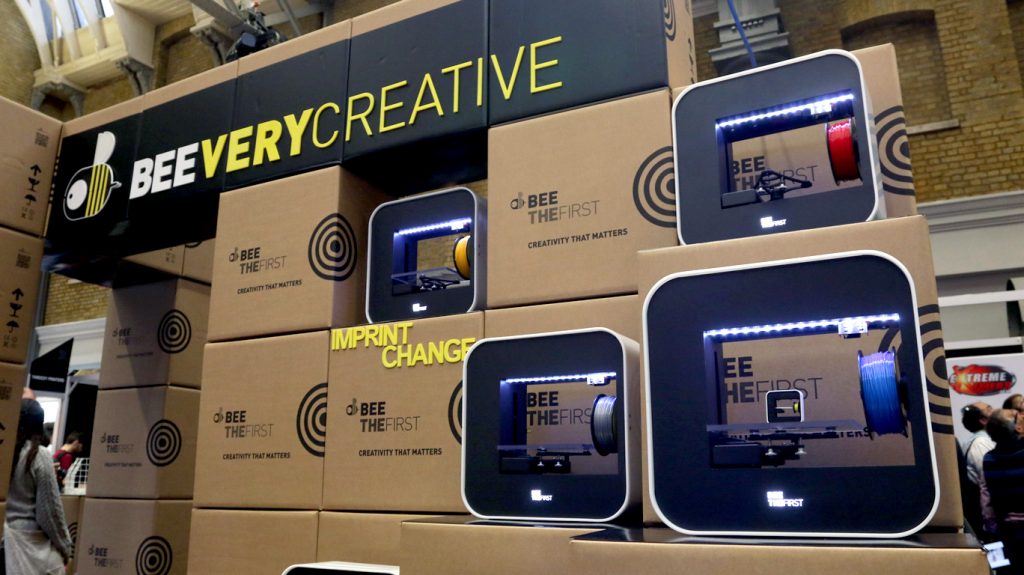
Beecreative en el London 3D Print Show
Desde nuestro punto de vista sí que hubo una empresa que claramente destacó en términos de innovación, esa sería Zmorph. Disfrutamos de que nos surgieran tantísimas preguntas acerca de sus máquinas. Todos hemos oído por ahí algo sobre la posibilidad de cabezales intercambiables, quizá incluso hemos visto algún prototipo, pero parece ser que esta empresa lo ha conseguido y lo ha hecho. Pudimos ver un amplio abanico de cabezales diferentes: Cortadora/grabadora láser, soporte para Dremel, extrusor de cerámica, extrusor de chocolate, extrusores para filamentos de 1,75 y 3mm, así como un extrusor dual. Otra característica que obviamente nos captó la atención fue Voxelizer, su particular y propia forma de abordar el proceso de laminación basado en la idea de voxels (pixeles tridimensionales, es decir, cubos). No lo hemos probado aún pero como mínimo se merece un aplauso por tomarse el tema en serio y proponer nuevas ideas. El hecho es que nos parece muy interesante y con algunas herramientas completamente novedosas que podrían resultar muy útiles, como el reforzar o engordar puntos frágiles del modelo. En cualquier caso nos parece una herramienta increíble para el mundo de la educación y una máquina molona que tener en cualquier escuela o Makespace. Esperamos poder probar tanto la máquina como el software lo antes posible. ¡Gracias a Bartosz por contestar nuestro bombardeo de preguntas!
Como veis no todo fue negativo en el L3DPS, tuvimos la oportunidad de conocer a algunas personas de interés como Brook Drumm de Printrbot, Paul Sohi de Makerversity y Steve Wood, director de Gyrobot Limited con el que tuvimos la oportunidad de compartir unas buenas pintas de cerveza junto con nuestro querido amigo Ignacio García, inventor del filamento elástico FilaFlex. También estuvimos compartiendo ideas con Mario, Antonio e Isabel, nuestros amigos de bq que estaban trabajando duro presentando la primera impresora 100% española, la Witbox. Solo nos faltó la oportunidad de conocer en persona a Richard Horne (RichRap), uno de los makers más seguidos y respetados de la comunidad que estuvo por el evento para dar una charla sobre sus experimentos DIY en impresión 3D.
No perdamos la fe, quizá el año que viene veremos algún tipo de enfoque sobre algo que desde nuestro punto de vista es fundamental en todo esto: ¡¡impresión 3D y EDUCACIÓN!! Si a esta tecnología no se le dedica un poco de reflexión y dejamos que simplemente crezca de forma salvaje en la dirección que apuntan piratas como Bre Pettis o matones como 3D Systems es más probable que todo esto acabe siendo otro negocio billonario en manos de unos pocos en vez de una tecnología catalizadora de la tercera revolución industrial. Existen preguntas importantes que hacer y atender, y en nuestra opinión, no hay mejor lugar para ello que un evento como el L3DPS. ¿Quién dijo que los negocios son el enemigo del pensamiento crítico? Es una pista amigos, ahí lo dejamos.
No te pierdas la galería completa de fotos del evento en nuestra página de Facebook.
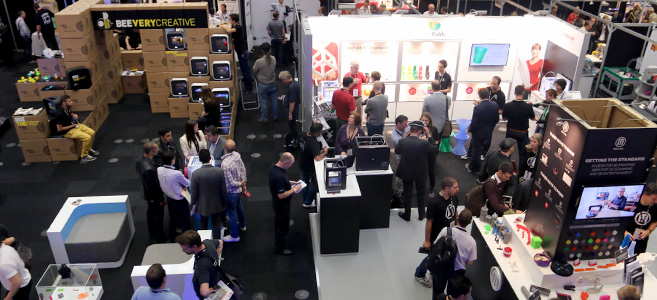
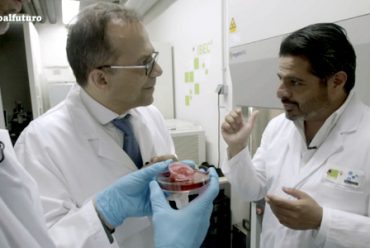
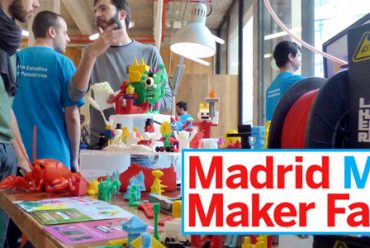

No Comments